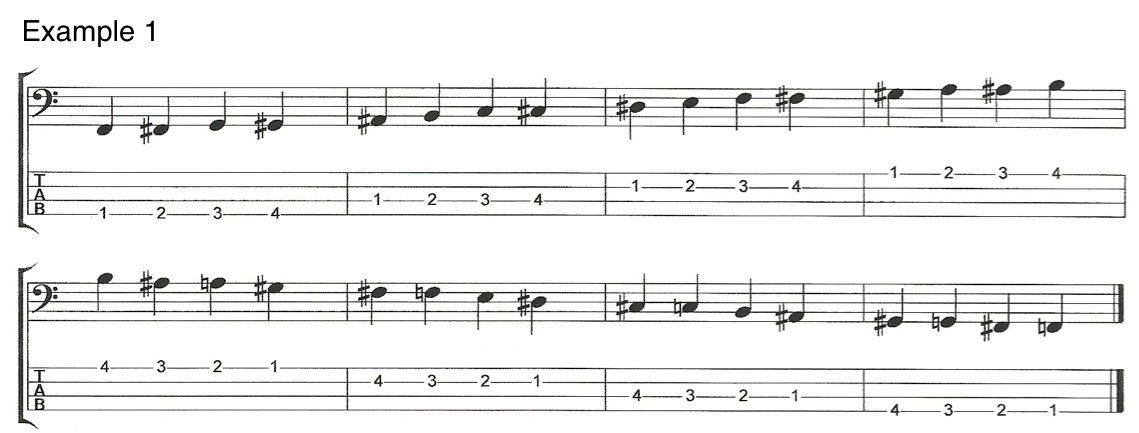Everything you need to know about harmony on the bass
Harmony is a lot simpler than most people think.
Like it or not the bass is a harmony instrument, bass lines have been around for centuries before the electric bass was invented and they’re the lowest harmony part. So Harmony and rhythm are our main functions as bass players. Rhythm is a much bigger and (in my opinion) much more interesting topic, but I wanted to make this video to show you exactly how simple harmony is.
Know the Chromatic Scale
The key to understanding harmony is first of all knowing that there are only 12 notes. Chromatic scale is simply a technical term for what you get when you play all 12 notes one after the other. If you’re not yet familiar with the chromatic scale, that is where you should start. It’s easier than learning the alphabet, there are more than twice as many letters in the alphabet than there are notes.
How Do You Avoid Playing Wrong Notes?
As bass players we usually play one note at a time. I know that you can play chords on the bass, I’ve made videos about it, but it isn’t our primary function. The term bass line implies one note at a time.
I am firmly of the opinion that there is no such thing as a wrong note. There are only 12 notes in total so if we start classifying some of these as wrong, we’re seriously limiting our options. There are inside notes and outside notes (I’ll explain these as I go on) and it’s our job as musicians to find ways of using them that makes sense musically.
Learn To Play Arpeggios!
So our job in terms of harmony is to choose which note out of the 12 we play at any one time. And the first thing that every bass player needs to know is chord tones or arpeggios. Arpeggio is just a classical term meaning all the notes of a chord played one at a time. Guitar players have chords and bass players have arpeggios. If you don’t know your arpeggios you will end up playing root notes all the time and your basslines will be boring.
How many notes in an arpeggio depends on the chord in question, but lets take an A7 chord for example. There are 4 notes (demonstrate). 4 out of 12. That’s already 1/3rd of all the notes and the chord tones are the strongest notes you can use in a harmonic situation.
What are Inside and Outside Notes?
Next is scale tones. Scales tend to have seven notes in them (not all I know, but standard major and minor scales and all their modes do). We’ve used four of them already in the arpeggio so there are three others that we can use as passing tones. These are the inside notes, notes that belong in the harmony. The remaining five notes that are not within the scale are the outside notes, you can think of these as chromatic passing notes.
So, Here’s Everything You Need to Know!
And that’s it, there are 12 notes, chord tones, scale tones and chromatic passing tones. It’s that simple. Your job is to learn what each of them sounds like, and the only way to do that is play them as much as you can. So cancel your application for that three year college course on advanced harmony and instead go forth and play your bass!
What Else is There?
Harmony and rhythm are the two biggest worlds in the language of music. And rhythm is much simpler than you might think as well, once you know how to sub-divide a beat into two, three and four. You know most of what you need to know about rhythm, but if you want more detail on rhythm you need to get my book Improve Your Groove. Here’s a link, https://geni.us/bassgroove
Enjoy!











